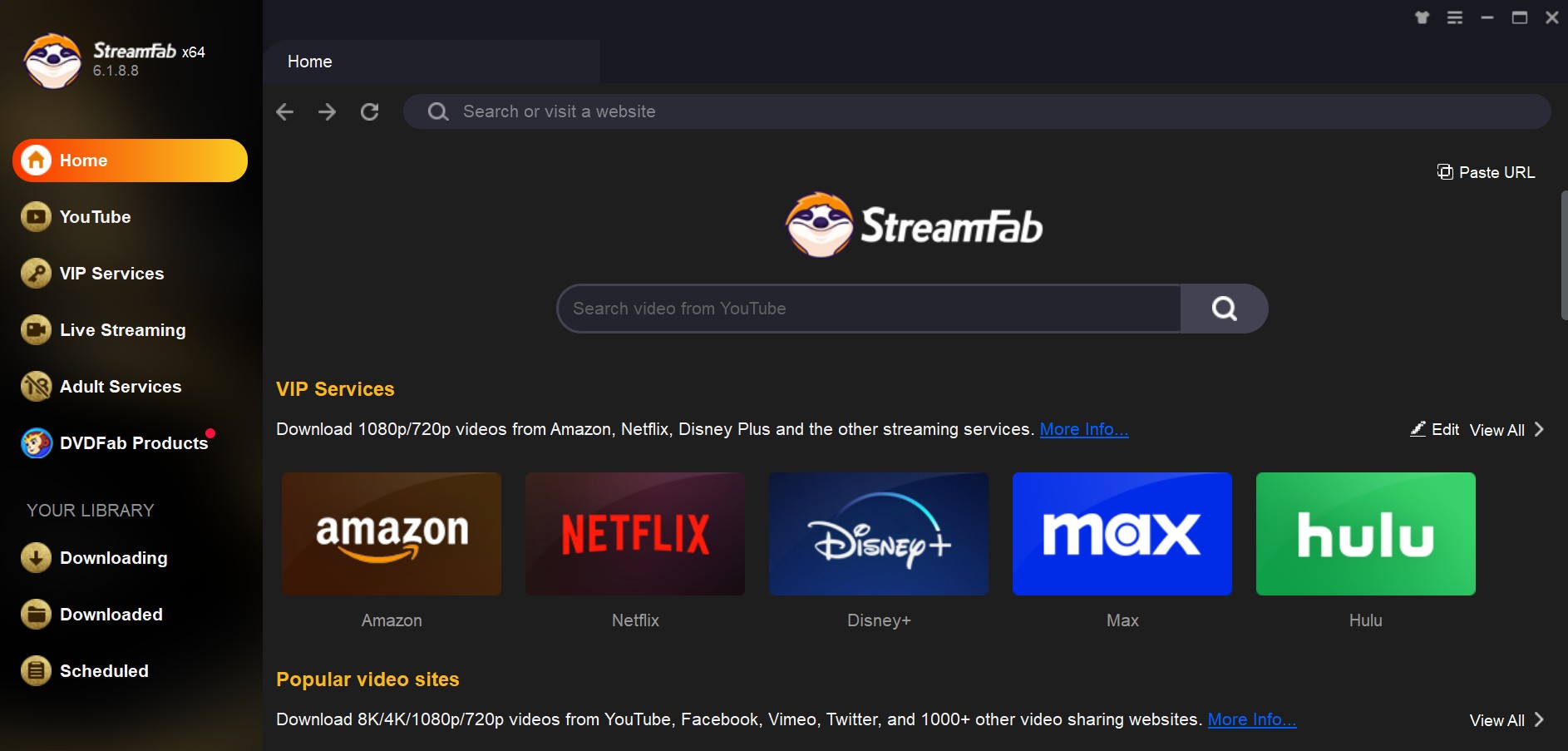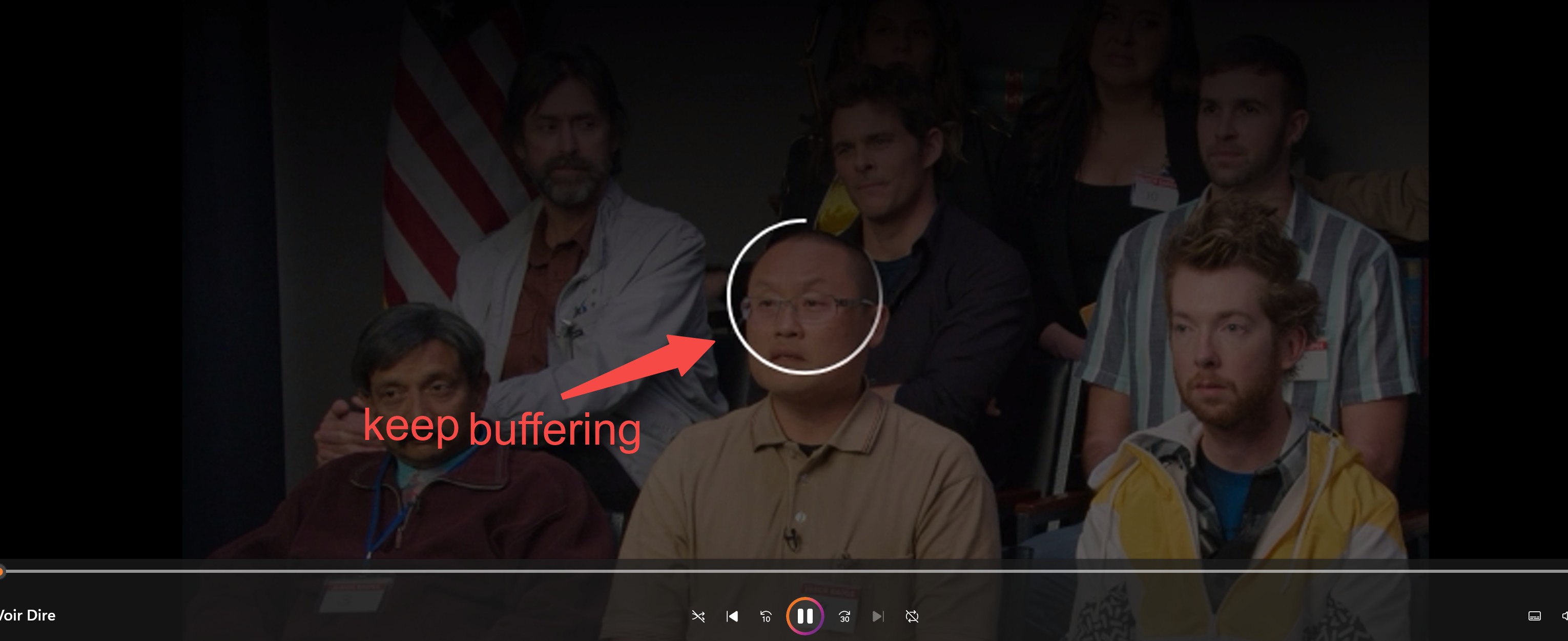Downloading vs Recording: What is the Difference | Offline Streaming
Summary: Currently, the common methods for offline viewing include downloading and recording, what are the differences between them? How do users differentiate between these two types of tools when selecting them? This article provides you with some information to assist in this matter.
- • The only one to download the latest videos in 1080p from Netflix, Max & Amazon Prime
- • Download 4K/8K videos from 1000+ sites including YouTube, Facebook, and more
- • Batch download YouTube videos or playlists to MP3 in 320kbps
Table of Contents
The consumption of videos on streaming platforms is increasingly popular. Although the platforms' own applications support offline downloads, the downloaded videos often come with certain playback restrictions:
- DRM protection
- Can only be played within the app
- Must be watched within 30 days or 48 hours, otherwise a new download is needed
So, how can one save videos offline without any restrictions?

Methods for Offline Streaming
Currently, there are several common methods for saving streaming media videos, mainly divided into the following categories:
So, what are the differences between these two methods, and what are their respective advantages and disadvantages? How to choose the right tool for yourself?
Is there a difference between these two methods, and what are their respective advantages and disadvantages? How can one choose the most suitable tool for their needs?
Downloading Method
Download mode is currently divided into two types technically, the difference lies only in the decryption method and the generation of the files:
1. Download + DRM Decryption
The products represented by StreamFab and Anystream are both designed to download original encrypted video streams from streaming platforms directly, decrypt DRM protection, and ultimately produce clear video files.

1. Fast download speed: The download speed is completely dependent on the user's bandwidth and the response speed of the user and the streaming platform server, such as Amazon. With a good bandwidth, the download speed can reach 30-50 MB/s.
2. Lossless video & audio quality: It is in lossless native quality and completely consistent with the quality provided by the streaming service platform.
3. Subtitle format: Supports a variety of subtitle output formats, such as Remux and external subtitle files.
4. High-quality audio and video formats: When streaming on a browser, streaming service platforms do not support 4K, HDR, Atmos, and other higher-quality playback. However, with some technical means, users can download them.
1. Download + CDM Decryption
The product, exemplified by CleverGet, utilizes a process wherein the original encrypted stream is first downloaded and then decrypted through CDM, acquiring the decrypted cached video stream, ultimately encoding and decoding to generate Clear video files.
1. Subtitle format: Supports a variety of subtitle output formats, including Remux and external subtitle files.
1. Compatibility: Every streaming platform requires in-depth analysis to support limited websites.
2. Video and audio quality: Inferior to the download mode.
3. High-quality video formats: Lack of support for superior video formats, such as Netflix HDR, Dolby Vision.
4. Slow CDM decryption speed: The decryption process involves decoding video frames, outputting YUV data, and subsequently re-encoding the YUV data. (StreamFab skips the decoding and encoding process to directly obtain the final video data, offering a much faster speed).
5. Re-encode files: The speed of generating re-encoded files depends on the user's computer hardware configuration, such as whether the user has a dedicated graphics card (for example, a 2-hour movie):
- 1060 CUDA hardware acceleration: 10~15 mins
- CPU Only: 1.5~2 hours
Record Mode
From the perspective of competitive technologies, the recording mode includes two methods:
1. Traditional Screen Recorders
Streaming recorders, in a general sense, refers to desktop products that allow users to capture the content they desire according to their needs. The content captured mirrors what is seen during playback.
>> Here is a sample recorded by traditional screen recorder, which appears black screen:

Compared to the download mode, streaming is more versatile, not limited to a specific website.
1. Slow recording speed: only capable of recording at 1x speed, which means that the longer the video duration, the more time it will take to record.
2. Uncertain recorded content: during the recording process, there may be some unnecessary content recorded, such as lag during playback, advertisements, or other pop-ups.
3. Uncertain output quality: the quality of the recorded video is necessarily related to the following two points:
- The quality of the streaming media itself, if the streaming media can only be played at 480p, then even if the recording software outputs 1080p video, it will still be of poor quality.
- Screen recording software technology & file encoding methods. Recording is lossy.
4. Audio quality: basically can only be AAC 2.0 audio, P.S. any product advertising the ability to record Atmos or EAC3 audio is fake.
5. Subtitle format: subtitles can only be in render format.
6. Compatibility: although the video seen when streaming is non-DRM protected content, streaming platforms can use certain techniques to prevent recording or display a black screen during playback.
2. Player Recording
This method involves intercepting the cache data of the player in the browser to achieve the purpose of recording videos. Typical methods include Audials and Play On.
>> Here is a sample recorded by Playon:

1. Offering a more compatible support for streaming sites
2. It supports high-speed recording.
3. Skip ads during recording
1. Speed slow: Compared to screen recording, this method allows for accelerated recording, such as 2x, 5x speed.
2. High resource consumption: During the recording process, files are generated simultaneously, leading to high system resource consumption.
3. Audio quality: Typically limited to AAC 2.0 audio.
4. Video quality: Dependent on the video quality played in the browser.
5. Subtitle format: Usually in Render format, but with a deeper analysis of streaming media platforms, it is still possible to separate video and subtitles during the recording process, supporting Remux or external subtitle formats.
How to Define Downloading or Recording?
How can one distinguish whether a certain product is in download or recording mode?
- The functional introductions of each product's product page
- From the perspective of resource utilization

- During the recording mode, there is usually a video encoding and decoding process, which can be distinguished by checking the resource utilization in the task manager during recording:
- Download mode occupies less CPU or GPU resources, usually less than 20%
- Recording mode occupies higher CPU or GPU resources, typically above 30%
The above is all the information regarding the differences between downloading and recording modes. We strive to express technical knowledge in simple and understandable language.
If you are struggling to choose between different video downloading tools, or if you are a bit confused about the differences between recording and downloading modes, we hope this article can help you.
